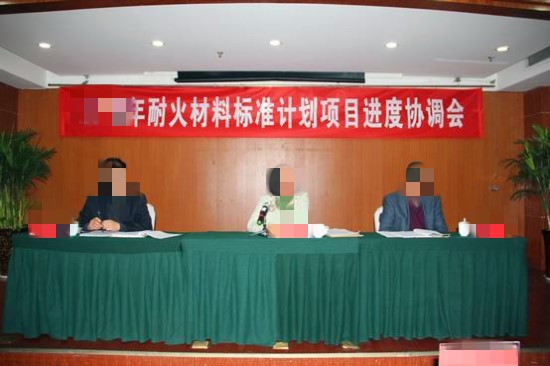What are the national standards for the construction of refractory castables?
2020-04-30 16:53:13
At present, there is no detailed standard for the construction of refractory castables. However, in the national standard of refractory materials GB/T, there are clear inspection and testing standards for various refractory materials of various materials. You can refer to the standards to measure the pouring. The construction of the material, the following An Rui refractory will come and briefly talk to everyone.

Many castable constructions can be inspected and tested in accordance with the current National Standard for "Refractory Thermal Expansion Test Method" GB/T7320. The refractory castable lining should meet the following requirements:
1. The construction site should be cleaned first.
2. Refractory castables and refractory bricks or thermal insulation products should be isolated by contact with water absorption measures. Foam boards and plastic cloths can be used for isolation during construction and removed after construction.
The surface of the formwork used for pouring the furnace lining should be smooth with sufficient rigidity and strength, and the support and removal of the simple formwork should meet the following requirements:
1. The support is firmly assembled and disassembled so that there is no slurry leakage at the joints. The wooden slats reserved for the expansion joints should be fixed firmly to avoid displacement when vibrated.
2. Refractory castables with strong corrosive or cohesive properties should be provided with isolation layers in the formwork to take anti-adhesive measures. The thickness in the thickness direction is accurate and the allowable deviation is +2~-4mm. When the strength of the castable has not reached 1.2MPa, the template should not be installed on it
3. The height of each formwork that can be supported by horizontal layered section or block interval supporting form should be determined according to the factors such as the ambient temperature of the construction site, the pouring speed and the setting time of the castable, and generally should not exceed 1.5m
4. The load-bearing formwork should be removed when the casting material reaches 70% strength. The non-bearing formwork should be removed when the casting material strength can ensure that the surface and corners of the furnace lining are not damaged by demolding. The hot casting material should be baked to the specified temperature before the mold can be removed.
5. The gap size, distribution position and structure of the expansion joint of the integral casting furnace lining should meet the design requirements, and the filling materials should be filled according to the design requirements. When the design does not specify the expansion joint gap size, the average value of the expansion joint per meter long lining. The expansion line on the surface of the light-weight refractory castable can be set at the time of pouring, and the width of the expansion line should be 1 to 3mm when the thickness of the lining is greater than 75mm after casting. The depth should be 1/3 to 1/4 of the thickness of the lining. It should be set in the shape of well for 0.8~1m.
6. When the thickness of the heat-resistant refractory castable lining is ≤50mm, manual pouring method can also be used for continuous pouring and manual tamping. After pouring, the surface of the lining should be flat and dense without calendering.
Lightweight refractory castable lining thickness δ<200mm, parts with lining surface inclination angle less than 60 can be poured by hand tamping method, uniform distribution should be continuous pouring, rubber hammer or wooden hammer is plum-shaped, one hammer pressure half hammer is smashed and then hand-held The surface of the vibrating compact furnace lining of the flat plate vibrator should be flat and dense without loose particles.
The refractory castables should be vibrated when pouring, and the mechanical vibration should meet the following requirements:
1. The casting material should be evenly and continuously layered when pouring, and the casting material of the second layer during the construction interval should be cast before the initial setting of the casting material. The free fall of the casting material should not exceed 1.5m.
2. The height of the pouring layer using the plug-in vibrator should not be greater than 300mm. The vibrating rod should be inserted into the lower casting material about 50mm. The moving distance should not be greater than the radius of the vibrating rod and the vibration time should not be too long. It can be settled again. When the vibrating castable is poured and vibrated, the formwork and support should be observed and deformation should be taken in time.





